I got a bit thrown into the cold water with this…
We have a product which consists of generally used files plus a few user specific ones. Based on the very good experience with Git for the development cycle, we are considering using Git as well for the distribution to the end users.
Distributing the generally used files is not such a big deal; that can be done with a specific branch. But I am somehow stuck with the user-specific files. One condition with those is that other users are not allowed to even know about them. The way I understand Git so far is that every place has the complete set of files, and that would not be allowed.
So, the questions:
Is Git still the tool for distribution to use?
If so, how would we implement the user-specific file distribution? (note that an update of the system would consist of new general files plus new user-specific ones)
What would be a good source of information helping me with these questions (aside of asking here)?
If Git is not really the tool for our purpose, which direction should we look at?
Thanks in advance for any comments.
